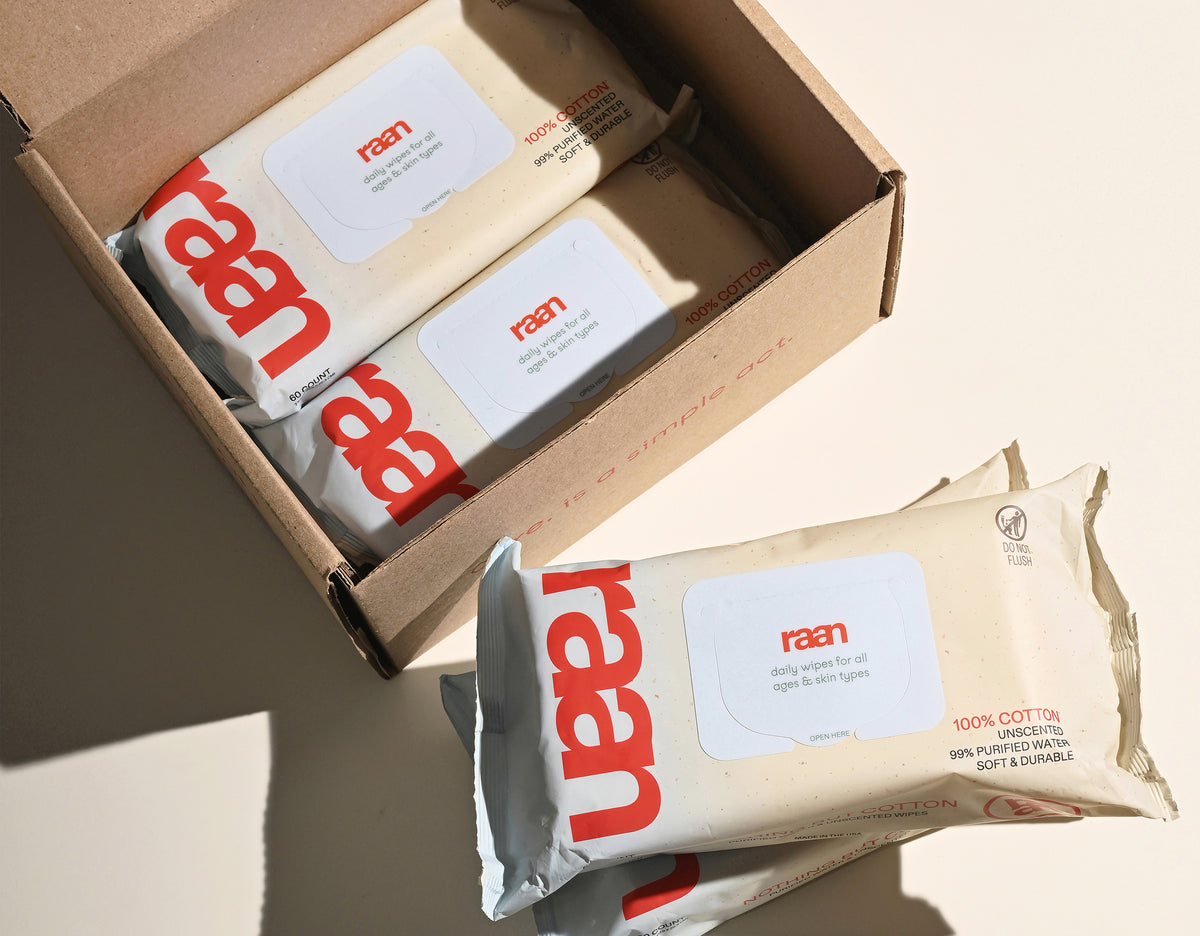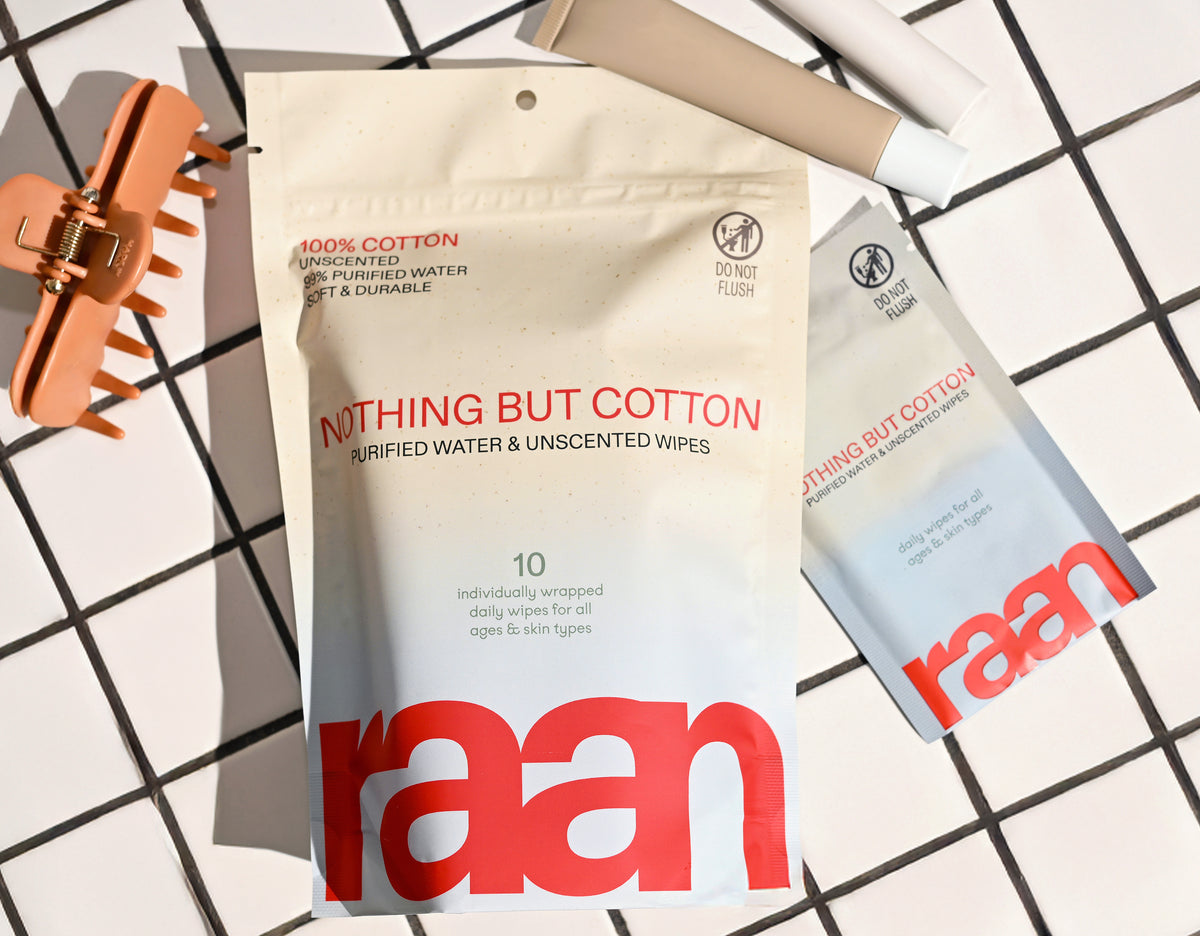The Hidden Truth About Baby Wipes
When you're reaching for that pack of baby wipes for the third diaper change of the day, you're probably not thinking about phenoxyethanol or questioning whether those "gentle" cleansers are actually gentle. But here's what we've learned after years of digging into ingredient lists: most baby wipes contain ingredients that have no business being near sensitive skin.
Key Takeaways
- Many baby wipes contain ingredients that are not suitable for sensitive skin.
- Consumers often overlook harmful components like phenoxyethanol in baby wipes.
- Ingredients labeled as "gentle" may not actually be safe for babies' delicate skin.
- It is important to scrutinize the ingredient lists of baby wipes before use.
Table of Contents
The baby wipe industry has mastered the art of making synthetic sound safe. Words like "pure," "gentle," and "natural" plaster every package, while the actual ingredient lists tell a different story. We're talking about potential endocrine disruptors, synthetic preservatives, and mystery "fragrance" blends that could contain dozens of unlisted chemicals.
It's not just about what's in conventional wipes - it's about what's missing. Real transparency. Actual simplicity. Materials that make sense for the skin you're cleaning every single day.
Quick Answer
The five hidden ingredients to avoid in baby wipes are: phenoxyethanol (a controversial preservative linked to potential health concerns), synthetic fragrances or "parfum" (which can contain undisclosed phthalates), PEG compounds (petroleum-derived chemicals), methylisothiazolinone (a harsh preservative), and propylene glycol (a synthetic solvent). Look for fragrance-free baby wipes made with minimal, transparent ingredients like purified water, organic aloe, and food-grade preservatives instead.
Not Your Average Wet Wipe

Let's be clear: we're not talking about upgrading from one conventional wipe to another. We're talking about questioning why baby wipes became so complicated in the first place.
Most parents assume that products designed for babies are automatically safer. But when you start reading ingredient lists - really reading them - you realize that gentle baby wipes often aren't gentle at all. They're just marketed that way.
Industry Reality Check: The average baby wipe contains 8-15 ingredients, many of which are synthetic preservatives, emulsifiers, and "conditioning agents" that exist primarily to extend shelf life and create a certain texture - not to benefit your baby's skin.
Here's what changed our perspective: we started asking why a cleaning wipe needs to be more complex than the skincare products we use on our own faces. The answer? It doesn't.
Real newborn-safe wipes should be simple enough that you can pronounce every ingredient and understand exactly why it's there. When you find yourself Googling half the ingredients on a "gentle" baby wipe, that's your first red flag.
The Wipe That's Changing Everything
The baby wipe market is worth billions, but it's built on a foundation of overcomplicated formulas and vague claims. What if we told you there's a way to clean effectively with just six ingredients - all of which you'd recognize?
This isn't about finding the "least bad" option among conventional wipes. It's about recognizing that sensitive skin infant wipes can be made from actual cotton (not synthetic materials) with a formula so simple that every ingredient serves a clear, necessary purpose.
We're talking about unbleached, 100% cotton wipes with purified water, organic aloe, food-grade preservatives, and nothing else. No mystery ingredients. No synthetic fragrances. No plastic fibers masquerading as "soft" material.
"The best baby wipe is the one with the fewest ingredients that still gets the job done safely. Parents shouldn't need a chemistry degree to feel confident about what they're using on their baby's skin." - Based on our research into ingredient safety
This approach isn't just better for babies - it's better for everyone. Because here's the thing: if a wipe is truly safe and gentle enough for newborn skin, it's perfect for your face, your hands, and any surface in your home. That's the kind of versatility that makes sense.
The difference isn't just in what these wipes contain - it's in what they don't. No hidden plastics in the material. No synthetic preservatives that exist solely to extend shelf life. No "fragrance" that could mean anything from phthalates to synthetic musks.
Instead, you get organic cotton baby wipes that work exactly as they should: effectively, safely, and without any ingredients you need to research or worry about.
What to Look for Instead: The New Standard
Understanding what to avoid is only half the equation. The real game-changer is recognizing what newborn-safe wipes should contain - and it's remarkably simple.
Ingredients That Make Sense
- Purified water (should be 99% of the formula)
- Organic aloe vera for natural moisturizing
- Food-grade preservatives (sodium benzoate, potassium sorbate)
- Natural pH balancers like citric acid
- Skin-conditioning agents like ethylhexylglycerin
Red Flags to Avoid
- Ingredient lists longer than 10 items
- Any form of "fragrance" or "parfum"
- Synthetic preservatives like phenoxyethanol
- PEG compounds or petroleum derivatives
- Ingredients you can't pronounce or research easily
The material matters just as much as the formula. Organic cotton baby wipes made from unbleached, 100% cotton provide a completely different experience than synthetic alternatives. No plastic fibers, no chemical processing, no unnecessary texture enhancers.
"The safest baby wipe is one where every ingredient serves a clear purpose and nothing is included just for marketing appeal. If you can't explain why each ingredient is necessary, it probably isn't." - Based on our ingredient research
This isn't about perfection - it's about making informed choices that align with your family's values. When you choose wipes with transparent, minimal ingredients, you're not just protecting your baby's skin. You're supporting a standard that prioritizes safety over synthetic convenience.
The shift toward cleaner formulations isn't just a trend - it's a recognition that baby products should be held to the highest safety standards, not the lowest acceptable ones. Every diaper change becomes an opportunity to choose better, not just different.
Making the Switch: Your Action Plan for 2025

Now that you understand what to avoid, the question becomes: how do you transition to safer alternatives without disrupting your daily routine? The answer is simpler than you might expect.
The most effective approach isn't to overhaul everything at once - it's to make one intentional switch that sets a new standard for your family's care products.
Start by examining your current baby wipes. Check the ingredient list against the five problematic ingredients we've covered. If you find phenoxyethanol, synthetic fragrances, PEG compounds, MIT, or propylene glycol, you've identified your starting point for change.
The transition process is straightforward: finish your current pack, then replace it with a product that meets higher safety standards. Look for gentle baby wipes that list five ingredients or fewer, use food-grade preservatives, and are made from natural materials like unbleached cotton.
Industry Reality Check: The global baby wipes market is worth over $4 billion annually, yet most products still rely on synthetic formulations developed decades ago. The innovation is happening in smaller, transparency-focused brands that prioritize ingredient safety over profit margins.
Consider the material as carefully as the formula. Synthetic wipes made from plastic fibers can feel soft initially, but they don't breathe like natural cotton and can trap moisture against sensitive skin. Organic cotton baby wipes provide better absorbency, gentler texture, and complete biodegradability.
The cost difference is often negligible when you calculate per-use pricing, especially when you factor in the reduced risk of skin irritation and the peace of mind that comes with transparent ingredients.
Beyond Ingredients: The Bigger Picture
Choosing safer baby wipes isn't just about avoiding problematic ingredients - it's about supporting a different approach to product development entirely. When you choose products with transparent, minimal formulations, you're voting for a standard that prioritizes long-term safety over short-term convenience.
The packaging matters too. Traditional baby wipes often come in plastic containers that contribute to household waste, while more sustainable options use recyclable packaging with significantly less plastic. Some brands have reduced plastic usage by up to 70% by eliminating hard plastic lids and using post-consumer recycled materials.
"The safest baby product is one where every ingredient serves a clear purpose and the manufacturer can explain exactly why each component is necessary. Transparency isn't just nice to have - it's essential for informed parenting decisions."
This shift toward cleaner formulations represents a broader change in how we think about everyday products. Parents are increasingly asking not just "Does this work?" but "Is this the safest option for my family?" and "What are the long-term implications of daily exposure to these ingredients?"
The response from forward-thinking companies has been remarkable: EWG-verified formulations, natural cotton materials, food-grade preservatives, and complete ingredient transparency. These aren't premium features - they're becoming the new baseline for responsible product development.
Your Family Deserves Better
The reality is that most conventional baby wipes were formulated when our understanding of ingredient safety was limited. Today's parents have access to better information, better alternatives, and the power to demand higher standards.
You don't need to become a chemistry expert to make safer choices. You just need to know what questions to ask: Why does this product need 15 ingredients when five would suffice? What purpose does each synthetic additive serve? Is there a simpler, safer alternative that provides the same cleaning power?
Quick Reference: What to Look For
- Ingredient count: Five ingredients or fewer
- Preservatives: Food-grade options like sodium benzoate
- Material: Unbleached, 100% cotton
- Certifications: EWG Verified, cruelty-free
- Transparency: Clear explanation of every ingredient's purpose
The switch to safer fragrance-free baby wipes made from natural materials isn't about perfection - it's about progress. Every diaper change becomes an opportunity to choose products that align with your values and protect your family's health.
As we move through 2025, the companies that prioritize ingredient safety and transparency will continue to gain market share, while those clinging to outdated formulations will be left behind. Your purchasing decisions drive this change.
The five ingredients we've highlighted aren't just technical concerns - they represent a fundamental choice about what we're willing to accept in products designed for our most vulnerable family members. When safer alternatives exist, using them becomes not just possible, but essential.
Your baby's skin deserves ingredients you can pronounce, understand, and trust. The future of baby care isn't about complex formulations or synthetic innovations - it's about returning to the simple, effective, and genuinely safe approaches that put your family's wellbeing first. For more guidance on how to choose the safest options, see this external resource.
Frequently Asked Questions
What ingredients should I avoid in baby wipes?
Look out for synthetic preservatives, fragrances, bleach, plastic fibers, and harsh chemicals in baby wipes. These can irritate sensitive newborn skin and contribute to environmental waste. Choosing wipes with simple, EWG-verified ingredients like purified water, food-grade preservatives, and organic aloe ensures safety and transparency.
How often can I safely use baby wipes on newborn skin?
You can use baby wipes as often as needed for diaper changes or quick clean-ups, but it’s best to avoid over-wiping to prevent irritation. Newborn skin is delicate, so opt for wipes with gentle, minimal ingredients that support skin’s natural barrier without stripping moisture.
Are baby wipes flushable or should they be disposed in the trash?
Most baby wipes, including ours, are not flushable and should be disposed of in the trash to avoid plumbing issues and environmental harm. Our wipes are made from unbleached, 100% cotton without plastic fibers, but still require proper disposal to keep your home and waterways clear.
Can baby wipes be warmed before use?
Warming baby wipes before use is fine and can make clean-ups more comfortable for your little one. Just avoid microwaving-warm them by placing the pack in a warm water bath or using a wipe warmer designed for this purpose to maintain safety and moisture.
How do RAAN’s baby wipes compare to mainstream brands?
Raan’s wipes stand out with unbleached, 100% cotton material and a minimalist formula of just five EWG-verified ingredients, avoiding plastic fibers and synthetic additives common in mainstream options. Our packaging uses 70% less plastic and is thoughtfully designed to reduce waste, offering a truly transparent, safe, and functional clean-care alternative for sensitive skin and everyday messes.







